Today is opening day of Spring Cutback on the High Line, the ninth since the park opened in 2009. Visitors marvel at the annual ritual: teams of volunteers from all over city working in shifts through the month of March to cut back the stalks, sticks and branches that dazzled us in a multitude of colors as the seasonal wheel turned through spring, summer, fall and winter. The Cutback is an existential part of the High Line, the result of its design philosophy. Most gardens are clipped and pruned at the onset of Fall when cold weather arrives, but here on the High Line they are left alone to complete the full cycle of their lives. Piet Oudolf, the horticultural artist who created these gardens, believes that plants are interesting and beautiful throughout all the stages of their life, from the soft, bright colors of springtime youth to the dark, spiky textures of a wintry old age. “Dying in an interesting way is just as important as living,” he once said. That’s why every new walk on the High Line is different from the last one. The gardens manifest a constantly changing, vibrantly living — and then, when the time comes, dying — landscape.
Over the years the gardeners have worked to develop a composting system that would fulfill Friends of the High Line’s founding goal of sustainability in every aspect of its operations, from food service to snow removal. They started with a small household wood chipper and gradually evolved into the sophisticated operation I unpacked in a post called “Composting at 30′” last year. In the old days, a couple of gardeners drove a panel truck to Staten Island every week to dump the clippings at the Fresh Kills landfill. The new composting system made that long, expensive, carbon-emitting journey unnecessary. Now they do everything on-site, with a major assist from a neighbor across the block: Intelligentsia at the High Line Hotel, which provides almost 300 pounds of coffee grounds (plus leaves from the odd cup of tea) each week.
Since my last post the gardeners haven’t stopped innovating: in June they acquired an enormous, state-of-the-art, Rocket A900 composter from Tidy Planet, a UK-based company whose machines are in use around the world and allow landscapers, hotels, universities, and office buildings to do safe, sustainable, on-site composting.
Nathan Bartholomew and Kaspar Wittlinger showed me the new Rocket system a few weeks ago, and shared the recipe they’ve been refining for High Line Compost: 24 liters of coffee grounds plus 24 liters of saturated wood chips. It’s measured in the same large garden trugs we volunteers use during the Cutback (see here) and then dumped into the maw of the machine.
The 500-gallon A900 has four zones and a system of steel paddles inside the giant tank that turns the biomass — all those clippings from the High Line and coffee grounds from Intelligentsia — and moves it through the successive zones of the tank at temperatures ranging from 80 – 190 degrees Fahrenheit, until it’s fully cooked and ready to return to the garden in a new form: rich, nutritional, home-made compost. The beauty of The Rocket is that it self-regulates. The gardeners can fill the tank at one end on a Friday afternoon and when they return to work on Monday morning a 13-gallon bag of fresh compost is waiting at the other end.
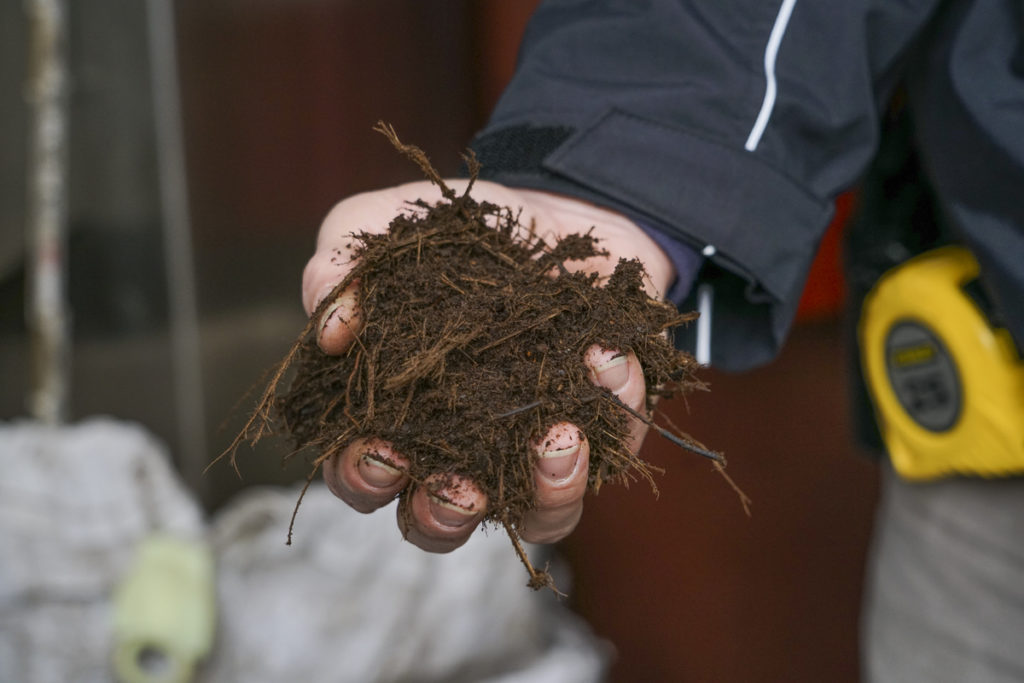 The Rocket is a high-tech partner for the gardening staff. “The key advantage,” Nathan explains, “is that we can collect data from the internal sensors and, theoretically, produce a higher quality compost. The temperature is recorded in four different zones inside the machine and we graph out this data to see what’s going on inside the vessel. It’s like having a window into an oven; we can actually watch the compost bake.” Another advantage: the machine cuts down on labor because, unlike a typical compost pile, it doesn’t have to be turned by hand. The gardeners can therefore spend more time in the field. The Rocket is still new and the staff is in the early stages of data collecting and recipe tweaking, but the benefits are clear.
The Rocket is a high-tech partner for the gardening staff. “The key advantage,” Nathan explains, “is that we can collect data from the internal sensors and, theoretically, produce a higher quality compost. The temperature is recorded in four different zones inside the machine and we graph out this data to see what’s going on inside the vessel. It’s like having a window into an oven; we can actually watch the compost bake.” Another advantage: the machine cuts down on labor because, unlike a typical compost pile, it doesn’t have to be turned by hand. The gardeners can therefore spend more time in the field. The Rocket is still new and the staff is in the early stages of data collecting and recipe tweaking, but the benefits are clear.
The best part of my tour was standing on a little stepladder, dropping my arm into the tank and palming a moist, soft handful of soon-to-be compost that smelled like a fine cup of espresso.
Kaspar and Nathan refer to Ingelligentsia’s contribution as “rocket fuel” because during the winter months, when the dying plants have less nitrogen than they do in spring or summer, it’s the moist coffee grounds that enables the composting process. Oudolf’s design generates an unusually high volume of low-nitrogen, winter biomass, and so the regular flow of fresh grounds to the composting area on the Chelsea Market Spur is key to the whole process.
Friends of the High Line’s goal is to generate enough home-made compost for the entire, mile-and-a-half long park, thereby eliminating the need to import fertilizer, a product that must be delivered by trucks powered by fossil fuel. They continue to recycle captured rainwater and the Rocket has a closed-loop system that sequesters moisture and returns it in the form of mist, as seen in the video. Beyond that, the gardeners would love to get to place where the High Line could donate excess compost to community gardens around the city.
So this month, as you walk up and down the High Line, consider the mathematics of the Cutback. Twenty volunteers per shift generate around 10 large bags of biomass. After a few days in the Rocket, the yield is thirteen, 30-gallon bags of compost. If you’re a volunteer you can take satisfaction in the fact that all those hours you spent clipping one day in March are coming back to the gardens of the High Line once again in the form of fresh compost: the rich, healthy byproduct of a carefully designed – and spectacularly beautiful – ecosystem.
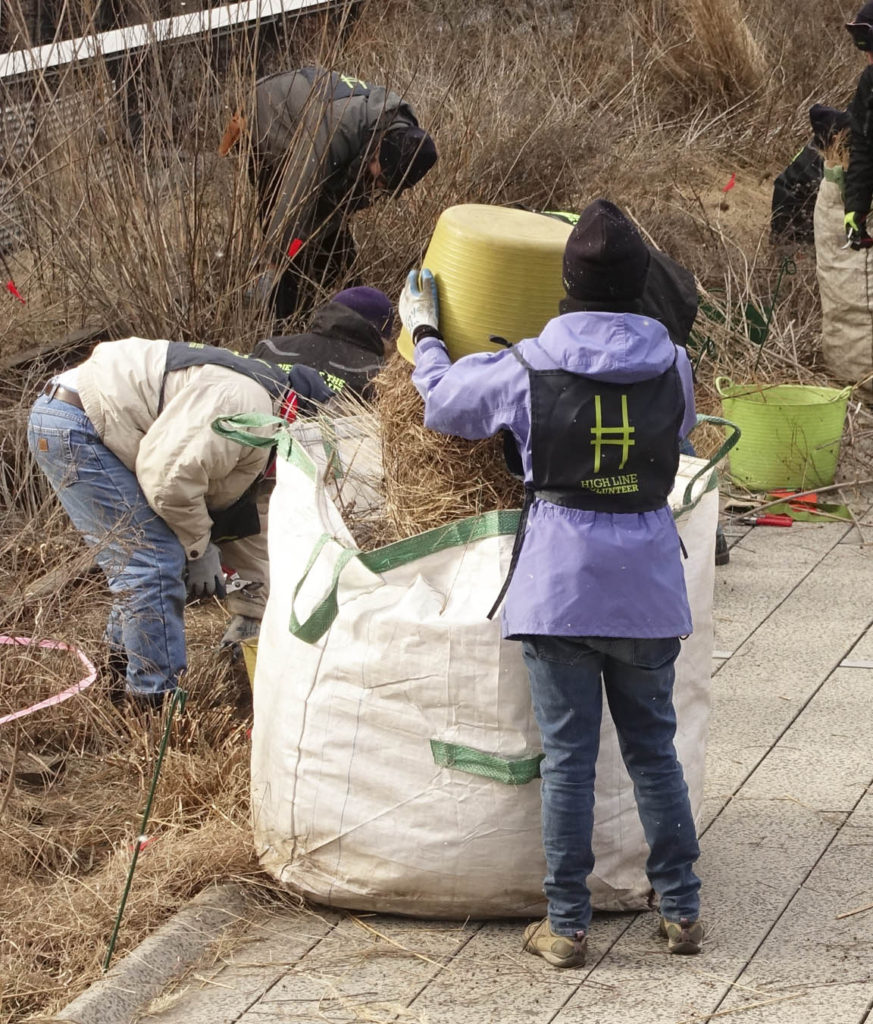

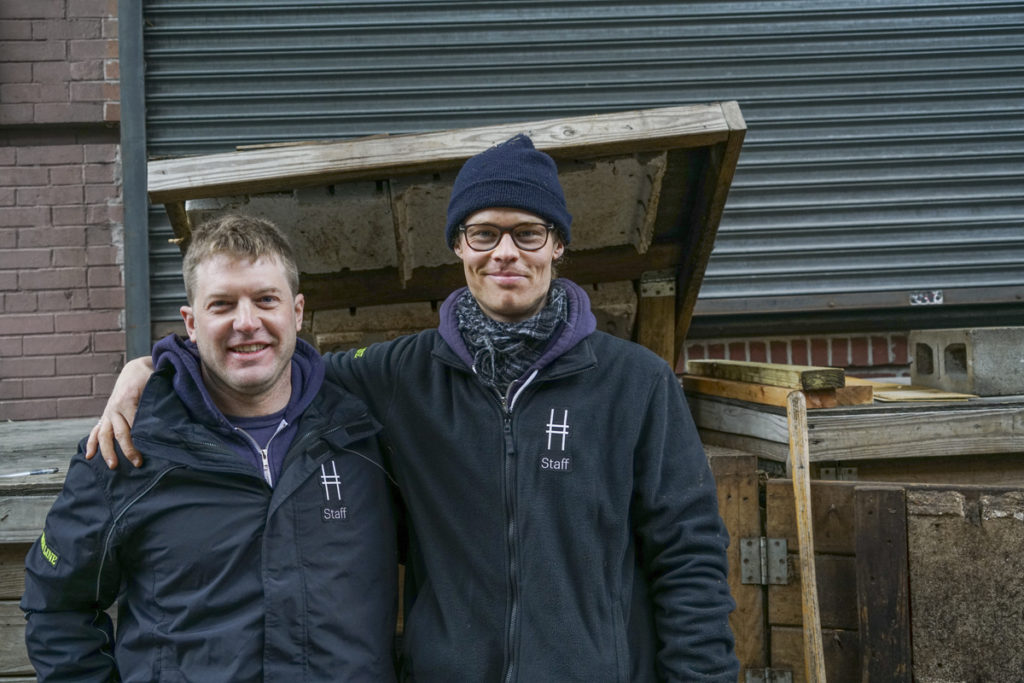
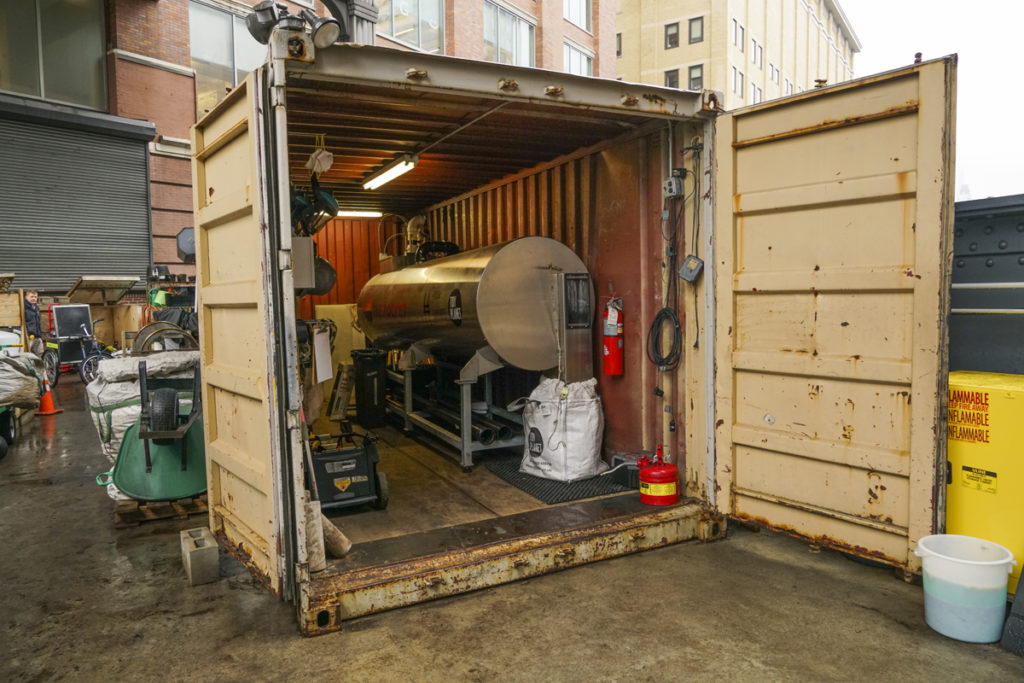

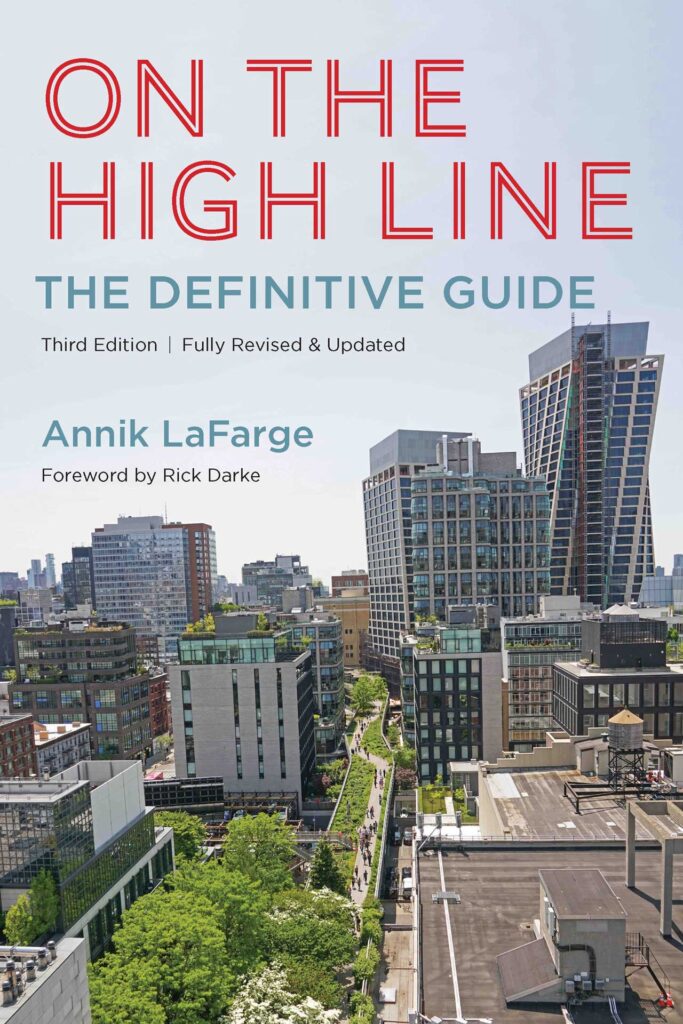


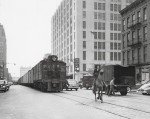

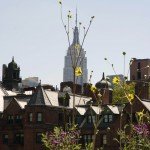

[…] https://www.livinthehighline.com/2018/03/05/rocket-men/ […]